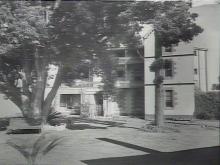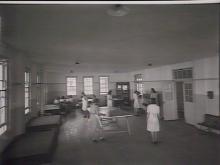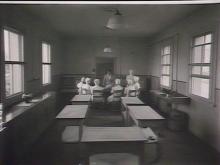Sydney (Parramatta)
The Parramatta Girls Home was the longest operating child welfare institution run by the Australian Government . More than 25,000 children, both Indigenous and non-Indigenous, lived at the school during its history . Many of these girls had been involuntarily placed at the school because they had either entered into the youth justice system or were under the care of welfare agencies. Residents protested against the abuse and exploitation that they experienced at the school, and the government established inquiries in response. A former resident spoke of the 'punishments [which] included flogging, scrubbing concrete in the same spot for hours on end on knees, isolation cells, dungeons'. Former residents established the Parragirls organisation to support community engagement with the history and legacy of the school and other similar institutions .
0Established in 1887 (as the Parramatta Girls Training Home), closed in 1974.
Parramatta Girls HomeParragirls, Parramatta Girl Industrial School, Parragirls http://www.parragirls.org.au/parramatta-girls-home.php
Naomi Parry, Parramatta Girls Training School (1946 - 1974) (3 December 2015) Find & Connect https://www.findandconnect.gov.au/ref/nsw/biogs/NE01318b.htm
Parragirls, Parragirls, Parragirls http://www.parragirls.org.au/parragirls.php
NSWYugambeh Museum
http://www.yugambeh.com/
Beaudesert Community Arts and Information Centre, Indigenous groups in the Scenic Rim, Beaudesert Community Arts and Information Centre
http://www.beaudesertartsandinfocentre.org.au/index.php/community-groups/community-groups/indigenou…
They sent me when I was 16 from Parramatta Girls' Home out to M, a property 137 miles from Nyngan. We never had a holiday. We weren't allowed to go into town with them. If you did go in or go anywhere and you saw any Aboriginal people, you weren't allowed to speak to them. So you had to live that isolated life. We never, ever got our wages or anything like that. It was banked for us. And when we were 21 we were supposed to get this money, you see. We never got any of that money ever. And that's what I wonder: where could that money have went? Or why didn't we get it?
Confidential evidence 11, Queensland: NSW woman removed to Cootamundra at 2 or 3 years in the 1940s, spending the ages of 13-16 in Parramatta Girls' Home.
Human Rights and Equal Opportunity Commission, Bringing them Home: National Inquiry into the Separation of Aboriginal and Torres Strait islander Children from Their Families (1997)
2-3 years Confidential evidence 11Because [my mother] wasn't educated, the white people were allowed to come in and do whatever they wanted to do - all she did was sign papers. Quite possibly, she didn't even know what she signed ... The biggest hurt, I think, was having my mum chase the welfare car - I'll always remember it - we were looking out the window and mum was running behind us and singing out for us. They locked us in the police cell up here and mum was walking up and down outside the police station and crying and screaming out for us. There was 10 of us (p. 40).
Most of us went to Crown St. Hospital. That's where my son was born, and then we went back to the hostel with the baby. Once we were there, we had the Welfare coming in, asking you what you was going to do - telling you most of the time that your parents didn't want you, the father of the baby didn't want you ... they said to me they couldn't find anyone that wanted me, and they couldn't find anywhere for me, like a live-in job where I could take the baby. And then they said the only one they could find that was willing to take me was my eldest sister, who I'd never seen since I was a little girl - she'd gone before us: she went away with some white people that were supposed to take her away for a good education - and they said she was the only one who was willing to take me, but she didn't want the baby. So they brought the papers in and told me to sign and that was it (p. 41).
The thing that hurts the most is that they didn't care about who they put us with. As long as it looked like they were doing their job, it just didn't matter. They put me with one family and the man of the house used to come down and use me whenever he wanted to ... Being raped over and over and there was no-one I could turn to. They were supposed to look after me and protect me, but no-one ever did (p. 146).
That's another thing that we find hard is giving our children love. Because we never had it. So we don't know how to tell our kids that we love them. All we do is protect them. I can't even cuddle my kids 'cause I never ever got cuddled. The only time was when I was getting raped and that's not what you'd call a cuddle, is it? (p. 195).
Confidential evidence 689, New South Wales: woman removed to Parramatta Girls' Home at the age of 13 in the 1960s and subsequently placed in domestic service.
Human Rights and Equal Opportunity Commission, Bringing them Home: National Inquiry into the Separation of Aboriginal and Torres Strait islander Children from Their Families (1997)
13 years Confidential evidence 689
Parramatta Girls Industrial School, date unknown

Parramatta Girls Industrial School, date unknown

Parramatta Girls Industrial School, date unknown
